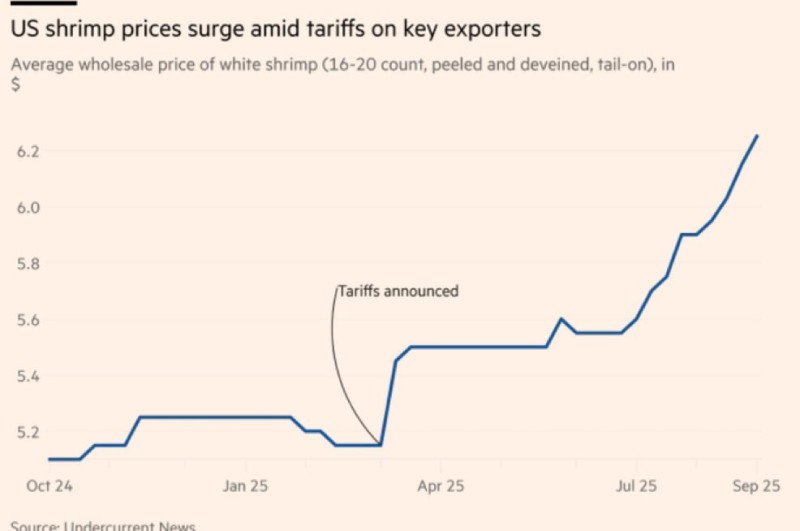Wholesale shrimp prices across the United States have jumped to levels not seen in over ten years. The cause? Steep tariffs on imports from India, the world's biggest shrimp supplier. What started as a trade policy move has quickly turned into a seafood crisis, driving up costs for restaurants and grocery stores nationwide.
What the Price Chart Shows
Social media user Navroop Singh recently pointed out the impact, calling it "shrimp inflation"—and the numbers back that up. India has long been America's go-to source for affordable shrimp, but with a 50% tariff now in place, the supply chain is scrambling.

Looking at wholesale prices for white shrimp (16-20 count, peeled and deveined, tail-on), the trend is stark:
- October through April: Prices held steady around $5.20 to $5.40 per pound
- Late April (tariff announcement): An immediate jump to roughly $5.60
- Summer into fall: Prices accelerated sharply, breaking past $6.20 by late September
The chart tells a clear story—tariffs hit, prices spiked, and they've kept climbing as buyers struggle to find replacement sources.
Why This Is Happening
The 50% tariff on Indian shrimp is the obvious culprit, but it's not working alone. US importers are trying to source from countries like Ecuador and Vietnam, but those suppliers simply can't match India's volume. Meanwhile, American demand for shrimp hasn't budged—it's still the most popular seafood in the country. Add in rising shipping costs and broader inflation, and you've got a perfect storm pushing prices higher.
This isn't just a problem for seafood distributors. Shrimp is everywhere—from restaurant menus to frozen food aisles—so higher wholesale costs will inevitably trickle down to consumers. Expect pricier shrimp cocktails at your local steakhouse and more expensive bags of frozen shrimp at the supermarket.
There's a potential silver lining for Gulf Coast shrimpers, who might gain back some market share. But they face their own challenges, from unpredictable weather to rising labor expenses, so they can't simply step in and fill the void.
 Peter Smith
Peter Smith

 Peter Smith
Peter Smith


